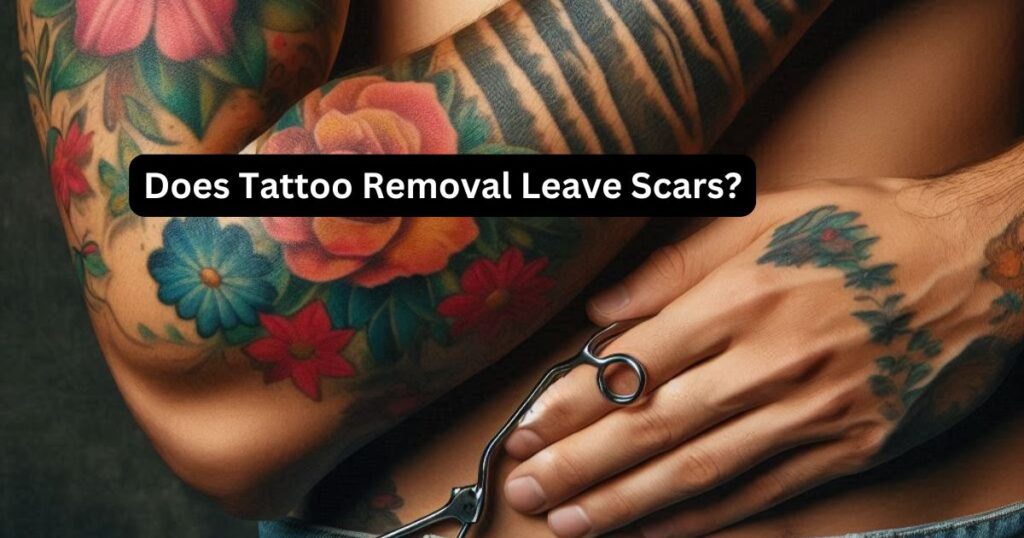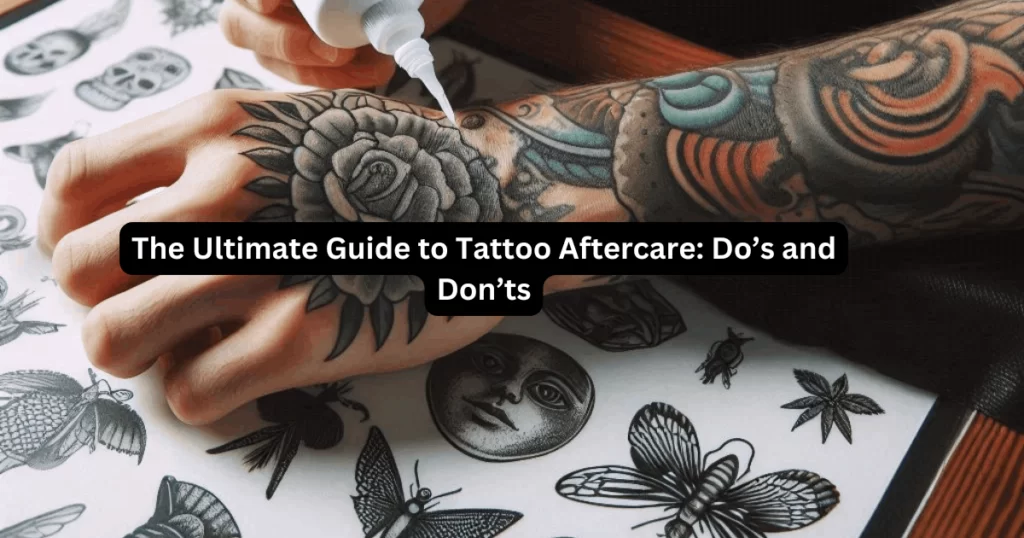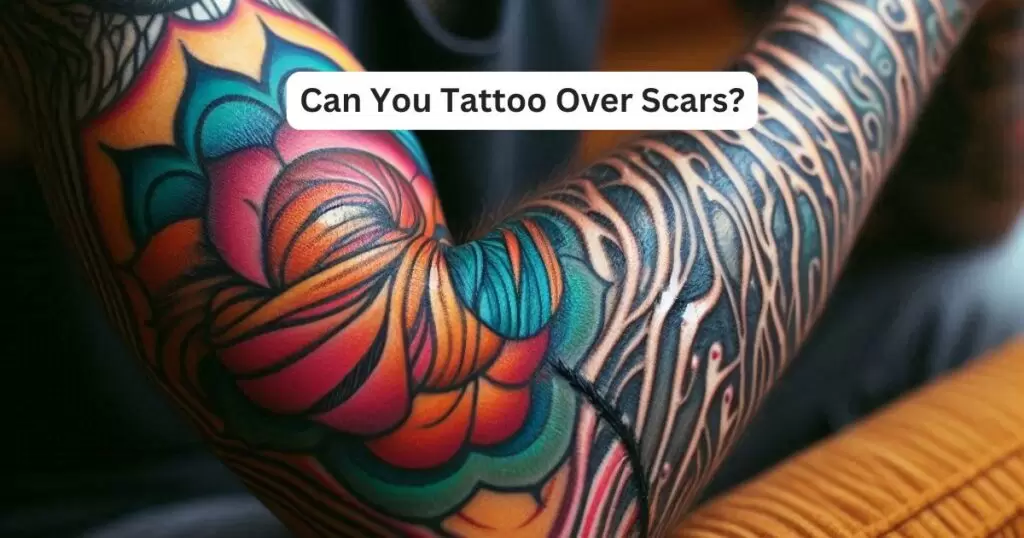Yes, tattoo removal can leave scars, but the risk varies depending on several factors. Whether you’re considering removing an old tattoo or preparing for the process, knowing what to expect is essential.
Let’s explore the possibilities and what you can do to minimize the chance of getting a scar during tattoo removal.
How Tattoo Removal Works
Tattoo removal involves breaking down the ink particles beneath your skin. Laser removal is the most common method. The laser targets the ink, causing it to shatter into smaller particles. Your body then absorbs and processes these fragments naturally over time.
Other methods include surgical removal and dermabrasion. Surgical removal involves cutting out the tattooed skin and stitching the remaining skin back together. Dermabrasion involves sanding down the top layers of your skin to remove the ink.
Each method has its pros and cons, but laser removal is generally preferred due to its effectiveness and lower risk of scarring.
Factors That Affect Scarring
Several factors influence whether tattoo removal will leave scars:
1. Skin Type
- Your skin type plays a role in how well it heals. People with darker skin may have a higher risk of pigmentation changes and scarring due to the laser’s interaction with melanin. Those with sensitive skin may also be more prone to scarring.
2. Tattoo Size and Location
- Larger tattoos require more sessions for complete removal, increasing the risk of scarring. The location of your tattoo also matters. Areas with thinner skin, like the wrists or ankles, may scar more easily.
3. Ink Colors
- Some ink colors are harder to remove than others. Black ink absorbs the laser’s energy best, making it easier to break down. Lighter colors like yellow, green, and blue may require more treatments, increasing the risk of skin damage and scarring.
4. Technique and Equipment
- The skill of your practitioner and the type of equipment used significantly impact the outcome. Experienced practitioners using modern laser technology are more likely to remove the tattoo effectively with minimal scarring.
5. Aftercare
- Proper aftercare is crucial. Following your practitioner’s instructions can reduce the risk of complications. Neglecting aftercare can lead to infections, which may cause scarring.
What to Expect During Tattoo Removal Process
Tattoo removal is a gradual process. Most tattoos require multiple sessions, spaced weeks apart, to achieve the desired result. The number of sessions depends on the size, color, and depth of the tattoo.
During each session, the laser will be applied to your tattooed skin. You may feel a sensation similar to a rubber band snapping against your skin. While the procedure is generally well-tolerated, some discomfort is normal. Your practitioner may apply a numbing cream to help manage the pain.
After each session, your skin may be red, swollen, or tender. These side effects are temporary and usually subside within a few days. However, if you notice blisters, scabbing, or signs of infection, contact your practitioner immediately.
Minimizing the Risk of Scarring
While some scarring risk is inherent, there are steps you can take to minimize it:
1. Choose an Experienced Practitioner
- Selecting a reputable and experienced practitioner is the most crucial step. They should have a proven track record in tattoo removal and use advanced equipment. Don’t hesitate to ask for before-and-after photos of previous clients.
2. Follow Aftercare Instructions
- Adhering to aftercare guidelines is essential for proper healing. This typically includes keeping the area clean, applying prescribed ointments, and avoiding sun exposure. Your practitioner may also advise against picking at scabs or blisters.
3. Be Patient
- Rushing the process can increase the likelihood of scarring. Allow adequate time between sessions to let your skin heal. This not only reduces the risk of scarring but also ensures better results.
4. Consider Your Skin Type
- If you have sensitive or darker skin, discuss these factors with your practitioner. They may adjust the laser settings or provide specific aftercare recommendations to reduce the risk of scarring.
Understanding the Risks
Despite taking precautions, there is still a risk of scarring. Understanding this risk can help you make an informed decision.
1. Hypopigmentation and Hyperpigmentation
- Some people may experience changes in skin color after tattoo removal. Hypopigmentation, where the treated area becomes lighter than the surrounding skin, is more common in darker skin tones. Hyperpigmentation, where the area becomes darker, can also occur. Both conditions are usually temporary but may take several months to resolve.
2. Keloid Scarring
- Keloids are raised, thickened scars that can form after skin trauma. People with a history of keloids are at a higher risk of developing them after tattoo removal. If you have keloids or are prone to them, discuss this with your practitioner before proceeding.
3. Infection
- Infections are a significant concern during the tattoo removal process. Infected skin is more likely to scar, so following strict hygiene and aftercare practices is essential. If you suspect an infection, seek medical attention promptly.
Alternative Options if You’re Concerned About Scarring
If the risk of scarring is too high for your comfort level, consider alternative options:
1. Tattoo Lightening
- Instead of complete removal, some people opt for tattoo lightening. This process involves fewer laser sessions to fade the tattoo rather than remove it entirely. Once the tattoo is lightened, it can be covered with a new design, effectively hiding the original tattoo.
2. Cover-Up Tattoos
- A skilled tattoo artist can design a cover-up tattoo that blends with or entirely conceals your existing tattoo. This option avoids the risks associated with laser removal but requires careful planning and a talented artist.
3. Embrace Your Tattoo
- If your tattoo holds sentimental value or you’re concerned about scarring, you may choose to keep it. Tattoos are a form of self-expression, and many people grow to appreciate them as part of their identity over time.
Does Tattoo Removal Leave A Scar?
Tattoo removal does carry a risk of scarring, but the extent varies based on several factors, including your skin type, the size and location of the tattoo, and the method used. By choosing a skilled practitioner, following aftercare instructions, and being patient throughout the process, you can significantly reduce this risk.
If you’re unsure whether tattoo removal is the right choice for you, consider alternatives like lightening or cover-up tattoos. Ultimately, the decision is personal and should be made with careful consideration of the potential risks and benefits.
Whether you choose to remove your tattoo or keep it, understanding the process and setting realistic expectations will help you make the best decision for your situation.



